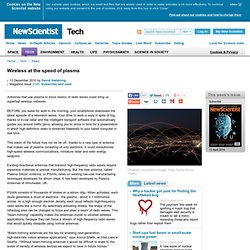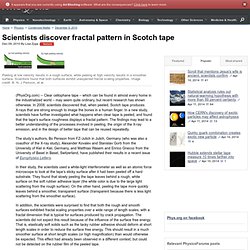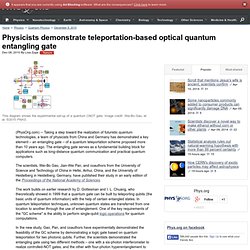

The Case for Parallel Universes. Editor's note: In the August issue of Scientific American, cosmologist George Ellis describes why he's skeptical about the concept of parallel universes. Here, multiverse proponents Alexander Vilenkin and Max Tegmark offer counterpoints, explaining why the multiverse would account for so many features of our universe—and how it might be tested. Welcome to the Multiverse By Alexander Vilenkin The universe as we know it originated in a great explosion that we call the big bang. For nearly a century cosmologists have been studying the aftermath of this explosion: how the universe expanded and cooled down, and how galaxies were gradually pulled together by gravity.
The nature of the bang itself has come into focus only relatively recently. Inflation is a period of super-fast, accelerated expansion in early cosmic history. The end of inflation is triggered by quantum, probabilistic processes and does not occur everywhere at once. There is also another approach that one can follow. Wireless at the speed of plasma - tech - 13 December 2010. Antennas that use plasma to focus beams of radio waves could bring us superfast wireless networks BEFORE you leave for work in the morning, your smartphone downloads the latest episode of a television series.

Your drive to work is easy in spite of fog, thanks to in-car radar and the intelligent transport software that automatically guides you around traffic jams, allowing you to arrive in time for a presentation in which high-definition video is streamed flawlessly to your tablet computer in real time. This vision of the future may not be far off, thanks to a new type of antenna that makes use of plasma consisting of only electrons. It could revolutionise high-speed wireless communications, miniature radar and even energy weapons. Existing directional antennas that transmit high-frequency radio waves require expensive materials or precise manufacturing. PSiAN consists of thousands of diodes on a silicon chip. Russell says that PSiAN could be commercially available within two years. Scientists discover fractal pattern in Scotch tape. (PhysOrg.com) -- Clear cellophane tape – which can be found in almost every home in the industrialized world – may seem quite ordinary, but recent research has shown otherwise.

In 2008, scientists discovered that, when peeled, Scotch tape produces X-rays that are strong enough to image the bones in a human finger. In a new study, scientists have further investigated what happens when clear tape is peeled, and found that the tape's surface roughness displays a fractal pattern. The findings may lead to a better understanding of the processes involved in peeling, the origin of the X-ray emission, and in the design of better tape that can be reused repeatedly. In their study, the scientists used a white-light interferometer as well as an atomic force microscope to look at the tape’s sticky surface after it had been peeled off a hard substrate. Explore further: Glasses strong as steel: A fast way to find the best More information: B.
Physicists create sonic black hole in the lab. (PhysOrg.com) -- Black holes get their name because they absorb all incoming light, and are so dense that none of that light can escape their event horizon.

In a new study, scientists have created a sonic analogue of a black hole in the lab – that is, a sonic black hole in which sound waves rather than light waves are absorbed and cannot escape. The scientists hope that the short-lived sonic black hole could allow them to observe and study the elusive Hawking radiation that is predicted to be emitted by traditional black holes, which has so far been a very difficult task. Physicists demonstrate teleportation-based optical quantum entangling gate. (PhysOrg.com) -- Taking a step toward the realization of futuristic quantum technologies, a team of physicists from China and Germany has demonstrated a key element – an entangling gate – of a quantum teleportation scheme proposed more than 10 years ago.

The entangling gate serves as a fundamental building block for applications such as long-distance quantum communication and practical quantum computers. The scientists, Wei-Bo Gao, Jian-Wei Pan, and coauthors from the University of Science and Technology of China in Hefei, Anhui, China, and the University of Heidelberg in Heidelberg, Germany, have published their study in an early edition of the Proceedings of the National Academy of Sciences.
The work builds on earlier research by D. Gottesman and I. L. In the new study, Gao, Pan, and coauthors have experimentally demonstrated the feasibility of the GC scheme by demonstrating a logic gate based on quantum teleportation for two photonic qubits. More information: Wei-Bo Gao, et al.